May 30, 2025 | 06:20 GMT +7
May 30, 2025 | 06:20 GMT +7
Hotline: 0913.378.918
May 30, 2025 | 06:20 GMT +7
Hotline: 0913.378.918
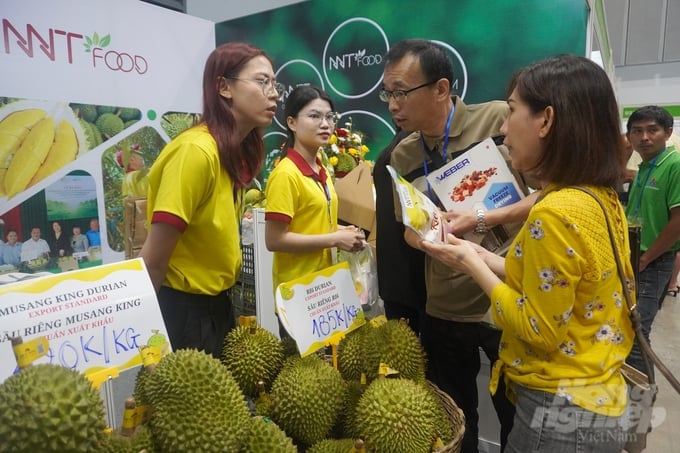
Durian export value proliferated, surpassing dragon fruit to number 1. Photo: Nguyen Thuy.
According to the Department of Crop Production, MARD, the area of fruit trees has increased steadily over the years. The country's total area of fruit trees is about 1.2 million hectares, of which the two largest production regions are the Mekong Delta and the Northern Midlands and Mountains.
Vietnam has about 50 fruit trees, including temperate, subtropical, and tropical fruits. In particular, the group of tropical fruits has an export advantage.
The country has many advantages in fruit harvesting season all year round. In 2022, Vietnam will be among the top countries producing and exporting several fruits, such as dragon fruit, grapefruit, lychee, and durian. In Southeast Asia, Vietnam ranks second in orange production and fruits such as mango, guava, and mangosteen, third in banana production, and fourth in pineapple production.
In addition to Vietnam's traditional and most significant export market, China (65%), Vietnamese fruits and vegetables have also penetrated many large, demanding markets such as the US, Korea, Japan, Netherlands, etc., with high export value.
Specifically, dragon fruit, longan, rambutan, mango, jackfruit, watermelon, banana, mangosteen, black jelly, lychee, sweet potato, passion fruit, and durian have been officially exported to China. Particularly for frozen products, the MARD has issued an official note requesting the Chinese Customs side to open the door for frozen products.
For the US market, Vietnamese dragon fruit, longan, lychee, rambutan, star apple, mango, and grapefruit have been allowed to be imported into this market.
Coconut, pineapple, banana, mango, white-fleshed dragon fruit, salad vegetables, temperate vegetables, onions, garlic, and chili can be exported to Korea.
One of the challenging markets, Japan, has also allowed the import of red-flesh dragon fruit, white-flesh dragon fruit, mango, lychee, spices, perilla, mustard greens, fresh spinach and Vietnamese frozen vegetables.
The EU market imports fresh tropical fruits, canned processing, fruit juice, sweet corn, baby corn, garlic, mushrooms, and sweet potatoes from Vietnam.
The Australian market imports dragon fruit, mango, lychee, longan, and grapefruit. The New Zealand market imports Vietnam's longans, mangoes, dragon fruits, rambutans, fresh lemons, and grapefruits.
In 2023, the export value of fruits and vegetables will reach about USD 5.6 billion, an increase of 66.7% compared to 2022, the year with the highest export value of fruits and vegetables ever. In particular, durian export value multiplied, surpassing dragon fruit to reach No. 1 position with about USD 2.2 billion, an increase of more than five times compared to 2022.
According to Mr. Le Thanh Hoa, the Deputy Director of The National Authority for Agro-Forestry-Fishery Quality, Processing and Market Development (NAFIQPM), MARD, Vietnam has many advantages when it has signed 17 FTAs. In addition, Vietnamese fruit and vegetable products have responded well to increasingly high market regulations on food safety and animal and plant quarantine.
On the other hand, markets that have signed FTAs do not require market access risk assessment for tropical fruits and vegetables, such as the EU and Canada. Therefore, Vietnamese agricultural and food products are to open worldwide.
According to Mr. Dang Phuc Nguyen, General Secretary of the Vietnam Fruit and Vegetable Association, in just the first two months of 2024, export turnover has reached USD 815 million. "The beginning has to be the tail to get there. In 2024, fruit and vegetable export turnover is expected to surpass 2023, and there will be new records," Mr. Nguyen said.
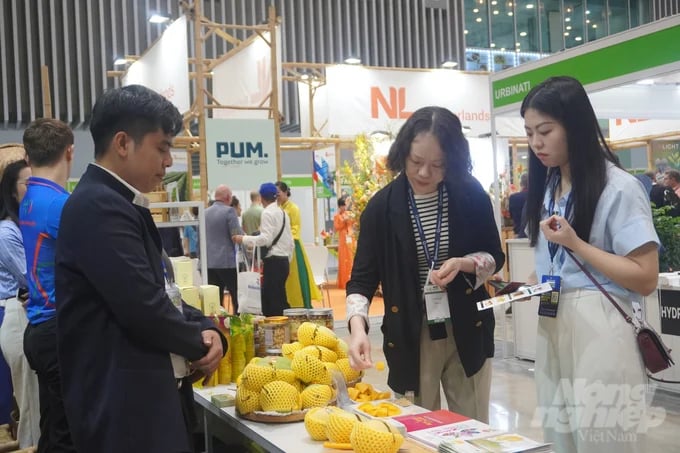
Uncle Chin Agricultural Products Company Limited (Cao Lanh district, Dong Thap province) introduces mangoes to international buyers at the Hortex Vietnam 2024. Photo: Nguyen Thuy.
According to Mr. Nguyen Nhu Cuong, the fruit and vegetable industry has achieved remarkable results recently. Not only does it show good growth in export turnover, but it also ensures stable supply and prices for a market of nearly 100 million people.
However, Mr. Cuong acknowledged that the fruit and vegetable industry still has some limitations that need to be overcome, especially the problem of unsustainable development. Most Vietnamese fruits and vegetables are mainly exported fresh, so they encounter technical barriers regarding plant quarantine and food safety.
On the other hand, preservation and processing technology still needs to improve, leading to many limitations in exporting to high-priced markets. Small-scale production and limited mechanization lead to high costs, uncompetitive prices, etc.
Mr. Le Thanh Hoa recommends that businesses and cooperative groups use some procedures such as VietGAP and GlobalGAP based on market requirements to meet the standards, requirements, and technical barriers of markets in the coming time. Standardizing the growing process ensures monitoring of food safety risks from planting - care - harvesting - and preliminary processing.
Building a production chain linking trade and processing, domestic consumption and export. Mechanization and application of technical advances improve quality and reduce costs of fruit and vegetable products. In particular, they are improving quality, meeting the increasing food safety requirements of the market, and building a brand.
In addition, according to Mr. Hoa, businesses need to train to improve management and supervision techniques on food safety in production and processing, as well as update and grasp the market's food safety and quarantine regulations. Establish a cooperation mechanism between management agencies - businesses - and producers to ensure information and meet market regulations.
At the same time, it is necessary to develop a promotion and marketing strategy for products associated with specialty products, geographical indications, and organic products in domestic and foreign markets through fairs, exhibitions, and connecting supermarket systems.
Mr. Cuong assessed that consumption demand and space in the global fruit and vegetable market are growing. Therefore, Vietnam's fruit and vegetable industry needs to take advantage of its advantages, overcome shortcomings, seize opportunities, access technology in cultivation, preservation, and processing as well as access many markets, from there contributing to sustainable development and changing the image and value of Vietnam's fruit and vegetable industry on the world map.
Forecasting Vietnam's fruit and vegetable export situation in 2024, Mrs. Le Thi Mai Anh, Asia-Africa Market Department, MOIT, said that it will continue to record a growth rate of 2. compared to 2023, is expected to reach about USD 6.5 - 7 billion if we take good advantage of the opportunity.
"Vietnam has many opportunities for export growth; the output of fruits that have penetrated major markets will continue to increase. In addition, Vietnam's fruit and vegetable export turnover only accounts for about 2-3% of worldwide export turnover. Therefore, the room for this industry is still huge," said a MOIT representative.
Translated by Tuan Huy
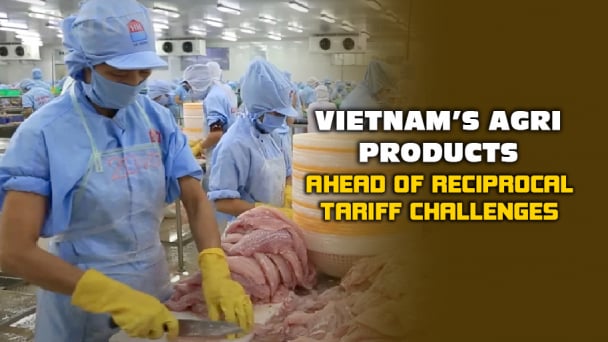
(VAN) Reciprocal tariffs are exerting pressure on U.S. exports, prompting Vietnamese firms to shift their focus to Muslim markets, Thailand, and Brazil.
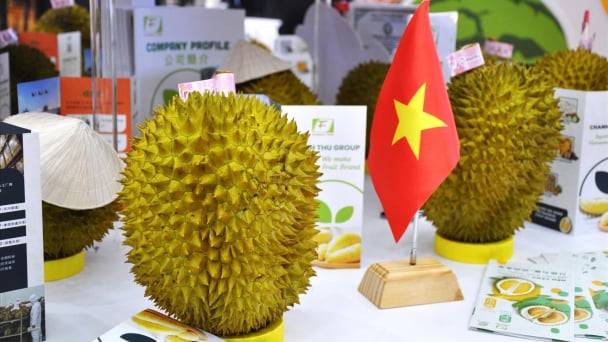
(VAN) A free booth for two years at Xinfadi, Beijing's largest wholesale market, will be allocated to Vietnam's agricultural products.
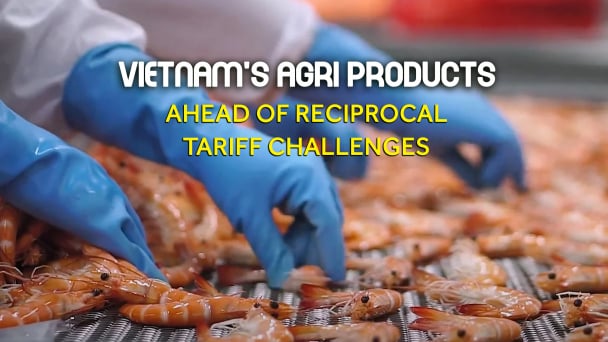
(VAN) Vietnamese shrimp exporters are actively looking for alternative markets and accelerating shipments to the United States in response to the pressure of impending reciprocal tariffs. This is occurring during a temporary tariff suspension.
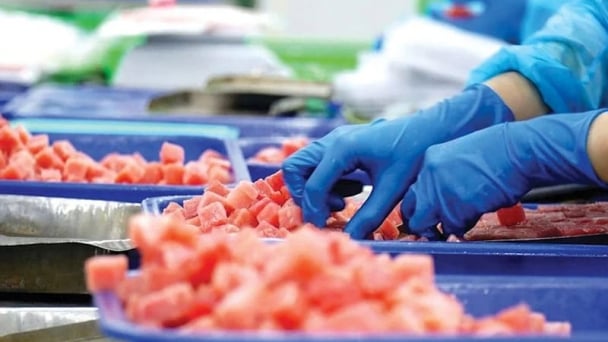
(VAN) The import-export turnover between Vietnam and Singapore rose amid a trade rebound, with machinery, electrical equipment, and fuels making up the majority of the transaction value.

(VAN) Director General of the General Administration of Customs of China, Ms. Sun Mai Jun, has pledged to implement measures that will ease the import process for Vietnamese agricultural products.
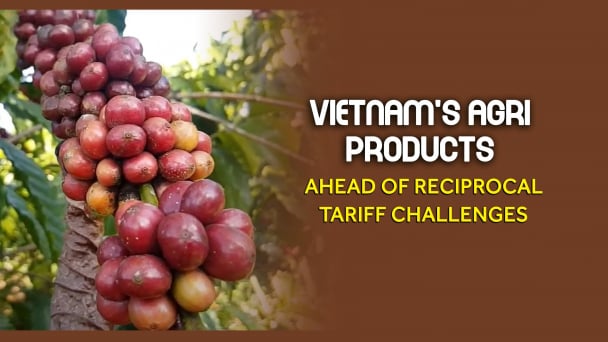
(VAN) Although Vietnam is still increasing its coffee exports, the industry is currently in the process of determining market strategies in response to the U.S. imposition of reciprocal tariffs.

(VAN) With rising demand in Muslim-majority countries, Halal certification is becoming a critical passport for Vietnamese agricultural products seeking sustainable market access and consumer trust in the Middle East and Africa.